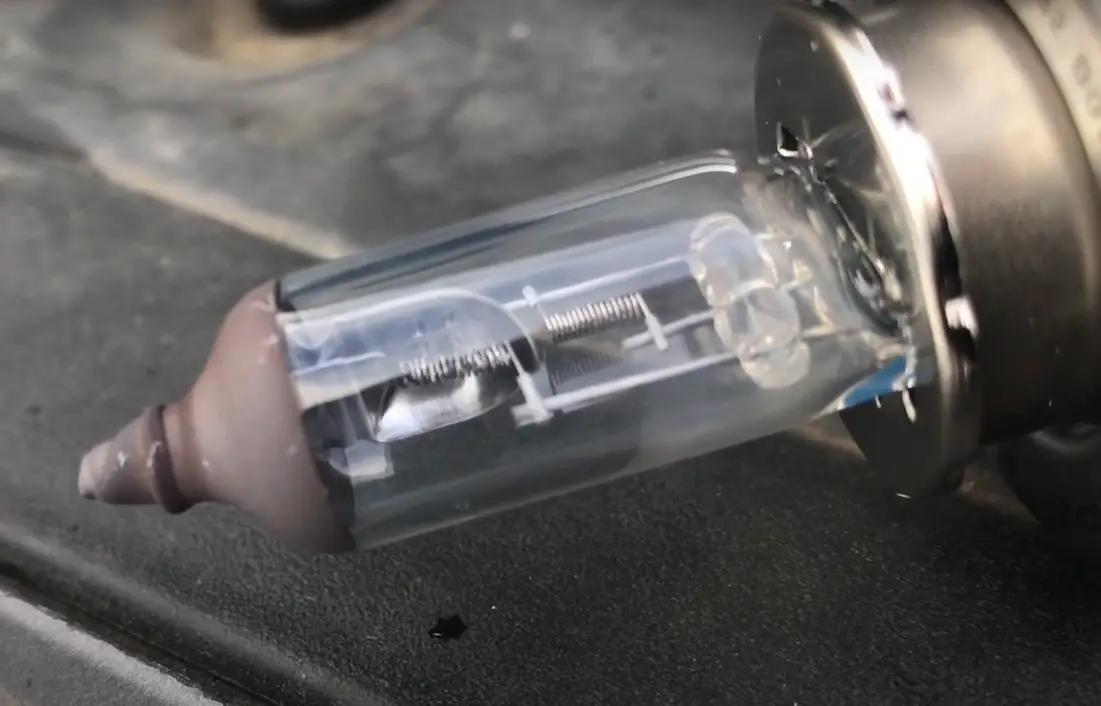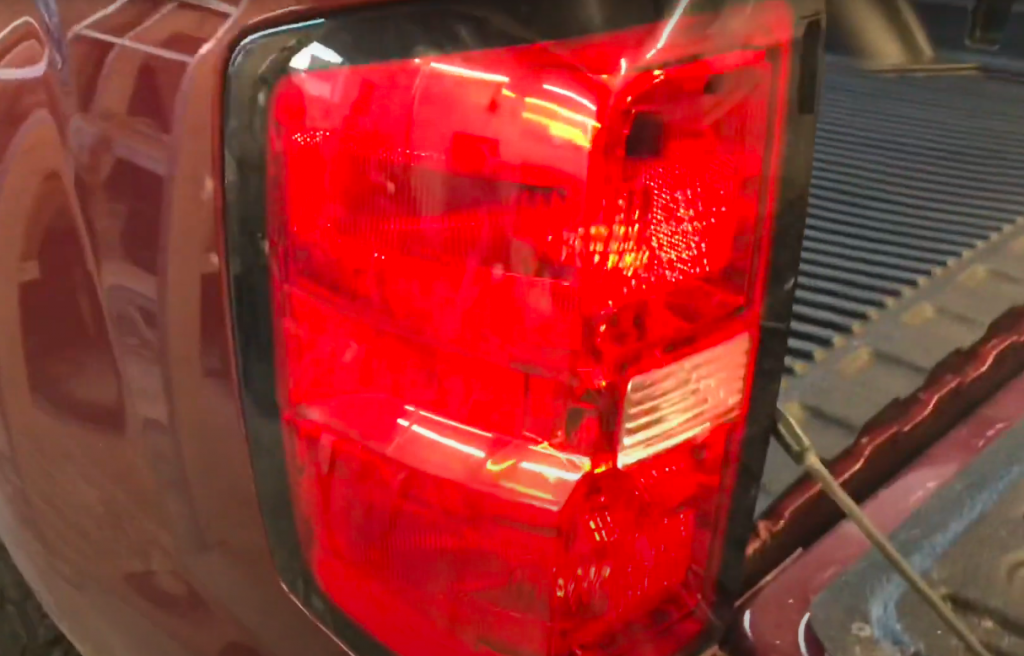Taillight out? It can be a pretty frustrating experience. Your taillights illuminate the area behind you to ensure that cars can spot you in the dark.
When your tail lights do not work, it becomes a significant safety issue. A ticket from your local police department may be the least of your concerns.
We’ve created a handy guide to address the question: “Why Are My Tail Lights Not Working And How Do I Fix Them?”
What Causes A Tail Light To Go Out?
Below are some common causes for why any of your lights may go out:
- Bad tail light-fuse
- Light bulb is burnt out
- The socket isn’t working
- Faulty wiring
- The control switch isn’t working
All of the above situations are frustrating, so we are going through some repair solutions to help you fix your lights. If you are going through any repair process, be sure to have the power off. Make sure to also have your parking brake on just in case your car decides to roll off.
Defective Tail Lights Fuse In Your Car
Tail lights not working? The most common reason your lights don’t come down to the fuses. Your fuses distribute power to different areas of your vehicle. That means if your light-fuse doesn’t work, your tail light isn’t going to turn on. That’s why the other term for your fuse box is the “power distribution center.”
To find your fuse box, locate your fuse panel nearby your dashboard. You can typically find it closer to the passenger side door.
Remove the access panel in front of your fuse box to a series of colorful fuses. If you don’t find it here, you can sometimes find it inside of a big black box under the hood of your car.
The inside of your panel will contain information detailing what each fuse does. Use this information to find out which fuse connects to your taillights.
You can also see the fuses to other kinds of running lights (turn signal, brake lights, etc.), so if you are experiencing multiple errors, now is the time to check your fuses.
At this point, you can test your fuse with one of two methods:
- The visual method involves looking inside of the colorful casing to spot your fuse. Your fuse is a small metal wire and should be easy to see. If you don’t see your fuse or see some burnt spots, your fuse is likely blown.
- The alternate method involves going out and purchasing a fuse tester (or test light). Place one end of the test light on your positive battery terminal and the other end of the fuse tester on the fuse. If your fuse tester lights up, that means you do not need to make a replacement.
How To Fix Tail Light Fuse
When replacing fuses, be sure that your old fuse and new fuse have the same amperage. You can find this out by comparing the size and the color, but otherwise, keep your eyes open using the informational diagram on the inside of the panel and the packaging for the new fuse.
If you install a fuse with the wrong amperage, it could lead to another blown fuse or not enough power going to your bulbs. If replacing your fuses doesn’t work, you need to check your light bulbs.
Bad Tail Light Bulbs
If your tail lights are not working, the second most common reason for this comes down to your tail lamp bulbs. A filament, or small wire, inside the bulb will hold a current of electricity inside it. If you do not see a filament inside your tail light bulbs or see a burnt section, you have to replace the bulb. You will need to unscrew the bulb from your socket and purchase a new one because you cannot replace a filament.

How To Repair Rear Tail Lamps
Follow these steps to replace a bulb on your headlights or taillights:
- Remove the outside covers by removing bolts from the inside of your trunk
- Safely remove the covers and set them aside
- Unscrew the light bulb from the sockets
- Ensure the new lights match the same wattage before you make the replacement.
- Carefully screw the new lights into the bulbs.
If you need some visual help in replacing your tail lights, check out these visual instructions:
When it comes to replacing bulbs, any type of light applies. That means you can use the guide above for replacing the brake light bulb, tail light bulb, or headlight bulb.
Check Your Bulb Sockets Located Underneath Your Light Bulb
As your car ages, A variety of issues can cause this:
- Dirty sockets
- Too much moisture in sockets
- Bent or destroyed pins
If your sockets are bad, you will see a reddish-brown color indicating rust or corrosion. You may also see some discoloration.
Before replacing a bulb socket, try cleaning it first. You can do this with any electric duster. If cleaning doesn’t help, proceed with the replacement.
Bad Or Broken Wires
If your fuses are good and your bulbs are good, your next step is to check out your wires. Keep an eye out for any burnt sections or broken cables. If you are still checking out the sockets, you can save time and do both at once.
Once you remove the panel, turn it over, and you should see the wiring diagram. These wiring diagrams are color-coded, so they should be pretty easy to identify.
If you have lousy wiring causing a short circuit, you may also find other errors related to the cruise control, body control module, or dash lights. Also, pay attention to where the ground wire is, as a failure of that will prevent everything from working.
Dirty Or Broken Ambient Light Sensor
Tail lights not working can also come down to sensors in your vehicle. Newer cars have ambient light sensors that check to see how dark it is outside. These are also known as “daytime running lights” and are a part of all modern lighting systems.
If you can, test to see if your headlights can be manually turned on. If they can, that means you will need to work to clean out the dust from your car. If cleaning the dust changed nothing, consult your local mechanic.
Faulty Light Control Switch
A tail light not working may come down to something as simple as a problem with the light switch. The switch controlling the lights on the front of your dash does have the potential to fail. If the light switch appears too loose or isn’t moving, your issue is related to this area.
If it is an electrical failure, pull off the switch manually and test it using your multimeter. If it doesn’t work, make a replacement.
Is The Brake Light And Tail Light The Same?
Brake lights and tail lights are not the same and do not use the same bulb. Brake lights inform drivers behind you that you hit the brake pedal, while tail lights tell drivers that you are driving at night.
Despite this, both of them run using electricity and typically use similar bulbs. As a result, replacing rear lights, brake lights, or parking lights will typically require the same process. You can use this guide to help you with any light replacement project.
How Much Does It Cost To Replace A Tail Light?
If your tail light bulb goes out, a single light bulb will cost around $20. If you purchase these in bulk, you tend to save money.
If you have a broken wire, the cost to replace that will be around a couple of dollars, as the electric wire is not too expensive.
If you need to replace a complete tail light assembly, that will depend on how new your car is. Older cars can cost as little as $300, while more modern cars can cost over $1500. I just hope that the only thing you need to replace is a new bulb.
What Do I Do If My Brake Lights Are The Problem?
If your brake lights are the problem, you can still follow the steps listed above to check wiring, bulbs, and bulb socket. Checking the switch on the front of your dash and the ambient light sensor will not help you.
Instead, this safety feature’s primary focus comes from a hidden brake light switch just above the brake pedal. To replace this, follow these instructions:
- Remove the dash’s underside and pull out a small threaded connector.
- Once you have it out, check to see if it is dirty
- Use a multimeter to see if you can find an electrical signal
- You may also find a broken wire behind this.
Conclusion
If your tail light is out, it is not a pleasant situation. While many of the problems listed above are typical, electrical issues take a lot of trial and error to get there. In some cases, you find out there is a problem when other drivers bash into where your rear lights should be working.
To prevent this from happening to you, choose a date where you check your lights in the middle of the night. If any lights are dim or dead, take the time to make a replacement. By adding light checks to your regular maintenance schedule, you can prevent some of the worst-case scenarios from happening.


